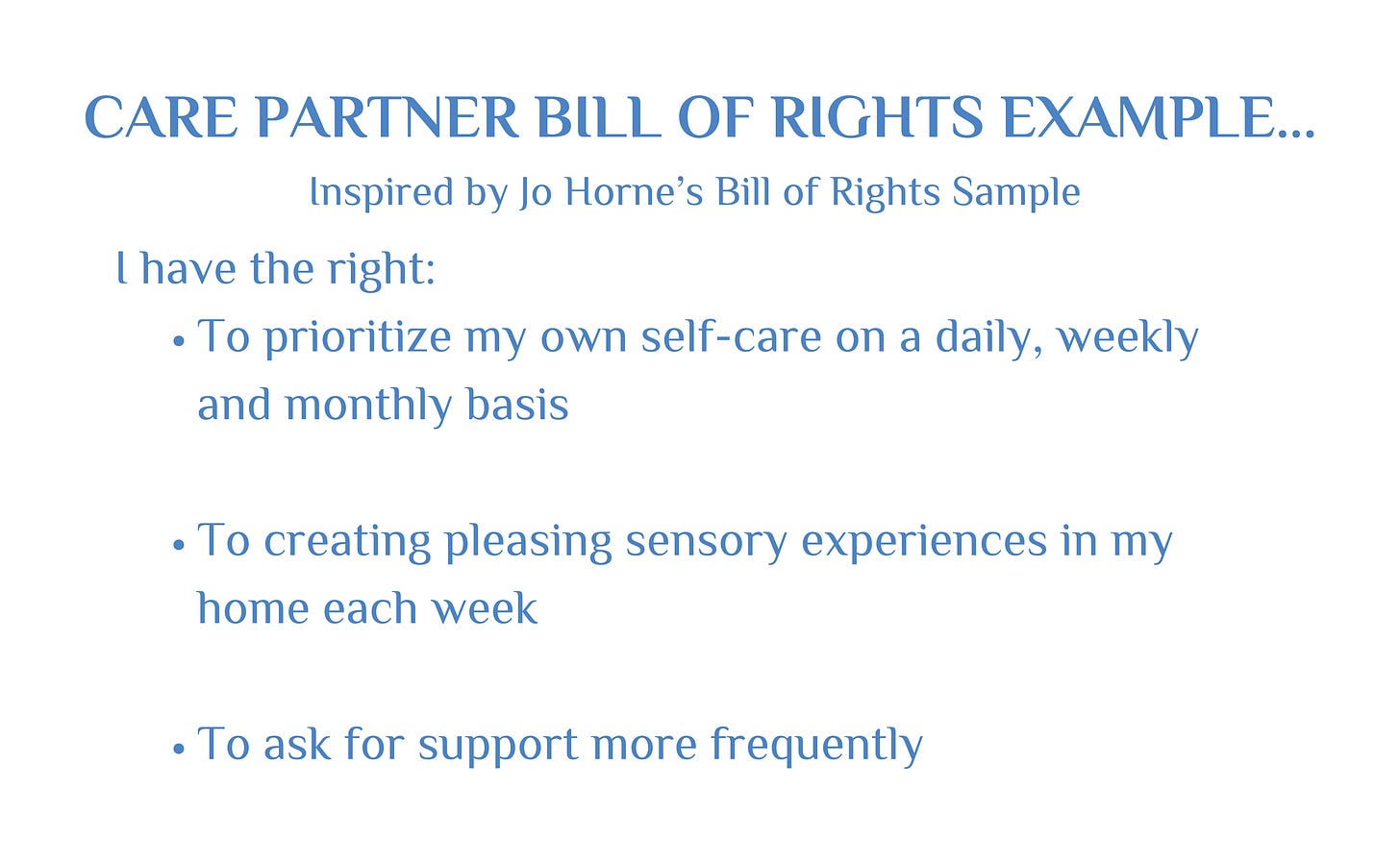Do you have a Caregiver Bill of Rights? What you need to know
Imagine for a moment that you take your own self-care as seriously as you take the support that you provide your person.
While that idea might seem foreign, even impossible, for most Care Partners, it is actually an essential component of maintaining this critical role. There are real consequences to consistently skimping on the wellness practices that keep Care Partners mentally and physically healthy.
“In order to take the best care of someone, you realize that you must practice self-care, or you will both suffer,” wrote Susan Stiles, a former National Council on Aging (NCOA) senior director in an NCOA article.
Care Partners who find themselves unmoored from their self-care practices might find that creating their own Caregiver Bill of Rights anchors them, offering both a starting point and a North Star.
“Your Caregiver Bill of Rights is a list of declarative statements that you proclaim for yourself in the context of your role as a caregiver,” Stiles wrote in her article.
She included an example, based on author Jo Horne’s Caregiver Bill of Rights, which features the phrase “I have the right,” followed by a numbered list that completes the sentence in various ways.
For instance, the first item reads, “to take care of myself so that I can better take care of my relative.”
The Bill of Rights offers a starting point. Additional, more-detailed lists of nourishing activities would provide ways to honor its declarations.
“For example, think about what it really means to ‘take care of myself’ and write a list of activities that will enable you to make this a reality,” Stiles wrote.
Nicole Howell, who is the Director of NCOA’s Direct Care Workforce Strategies Center, said that a Bill of Rights should ideally reflect the practices that enable a specific Care Partner to feel grounded and most like herself.
“It centers you as a person,” Howell said. “That is the one core thing. This is about your needs. Let it be about what you need to be well.”
A Care Partner’s Bill of Rights might include a statement affirming her right to create pleasing sensory experiences, for example.
In practice, that might mean baking bread, enjoying the smell, and then, when it’s done, the taste.
“Start with three things. Start manageable,” Howell said. “Don’t be afraid to subtract.”
Despite the formality of the title, the Caregiver Bill of Rights should be fluid, and “not chiseled in stone,” Howell said, and it will be written in language that speaks to the individual creating the list.
“It doesn’t have to be perfect,” she said. “You just have to start.”
It could be written in a notebook or a Care Partner’s phone. It could be printed and posted on the fridge, nightstand, or bathroom mirror.
She also suggests seeking accountability support. That might look like asking a neighbor to check in “every other day to ask me if I’ve taken a walk,” Howell said.
“In order to care for that person well and make sure all their needs are met, you have to understand what you need,” Howell said. “...We are a powerful force to be reckoned with. Remember that, when you feel diminished, you are part of an army of people around the world, and the U.S., that is caregiving, and you are doing the best you can.”





